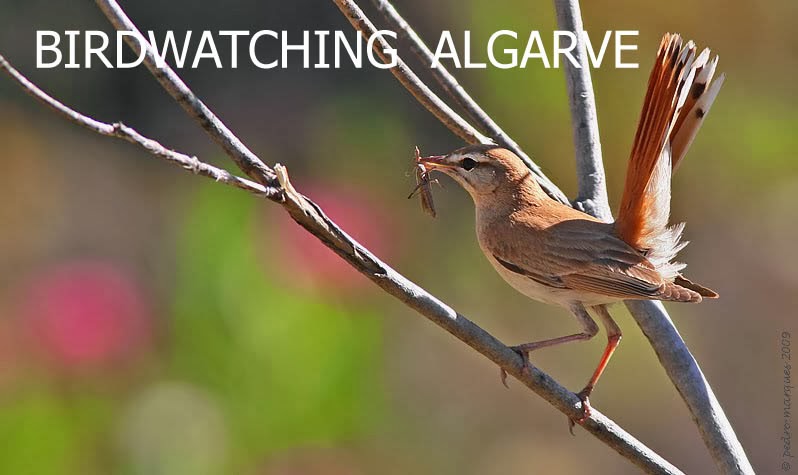 |
| European Bee-eater (Merops apiaster). Algarve, April 2017. Photo: GS. |
European Bee-eater is definitely one of the most emblematic bird species for spring in south Portugal. The first birds of this trans-Sahara migrant arrive during the second half of March at the Algarve coast, with most nest sites being occupied during April. Their wonderful flight calls are often the first sign of their arrival (usually a flock).
 |
| Male Western Black-eared Wheatear (Oenanthe hispanica). The species occurs around the Mediterranean, in a western (incl. the Iberian Peninsula) and an estern form, described as either distinct species or subspecies, depending on the systematic you choose to follow... what a beauty. Algarve, April 2017. Photo: GS. |
The Black-eared Wheatear inhabits hot and arid areas with sparse vegetation and some rocks or barren ground, mainly found in the the higher altitudes of Serra do Caldeirão and along the Guadiana valley as well as further inland, in the open plains of the Baixo Alentejo. During spring migration however, in April or early May, they can show up everywhere along the Algarve coast, even in the dunes or on a golf course, if wind conditions are favourable.
 |
| Another male Western Black-eared Wheatear (Oenanthe hispanica). This species occurs in two different color morphs - a pale throated one (this photo) and one with a dark throat (the photo above). Algarve, April 2017. Photo: GS. |
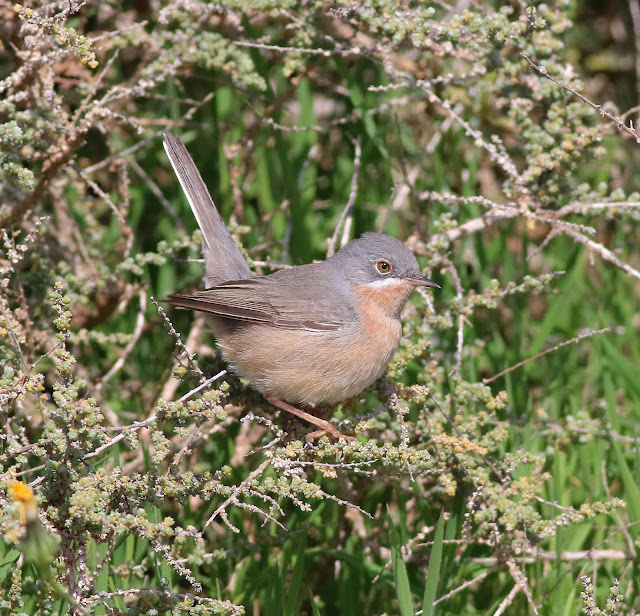 |
Subalpine Warbler (Sylvia cantillans). This male was found next to the sea and most probably flew in directly from north Africa during the previous night. Algarve, March 2017. Photo: GS.
|
Subalpine Warblers are fairly common breeders in the hills of the Algarvian Serras, where they coexist with
Dartford Warblers (
Sylvia undata) and the widespread
Sardinian Warblers (
Sylvia melanocephala) in the same areas and sometimes the same habitat, with the latter two represents of the
Sylvia-genus being residents. To make things a bit complicated, also for the Subalpine Warbler a "split" has been suggested, read
this if you like. The first Subalpine W. arrive as early as late February or early March, depending on weather conditions.
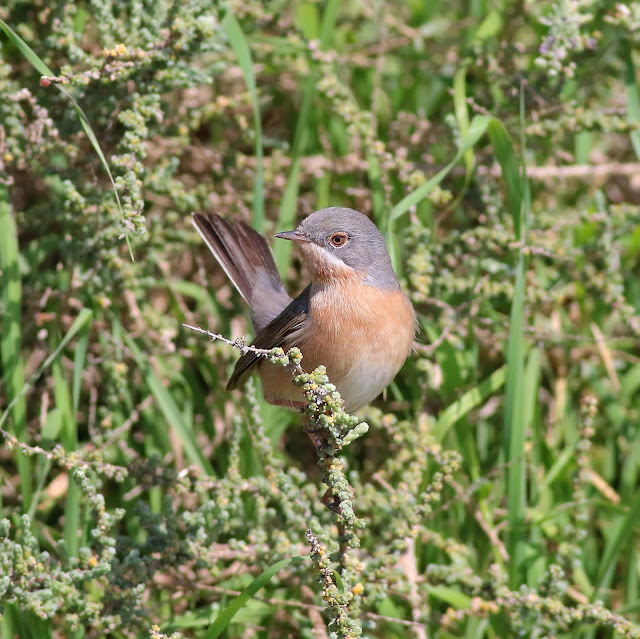 |
| Subalpine Warbler (Sylvia cantillans). Same Ind. as above. Algarve, March 2017. Photo: GS. |
 |
| Western Orphean Warbler (Sylvia hortensis) is a rather scarce breeder in the Algarve and not always easy to see. This adult male sings from his perch on top of a Holm Oak Tree (Quercus ilex) in a valley in the foothills of Serra do Caldeirão. Their short phrases of loud and full tones resemble rather a Thrush-species than a Warbler of this size. The white Iris on the male is diagnostic for this species. Serra do Caldeirão, 26-April-2017. Photo: GS. |
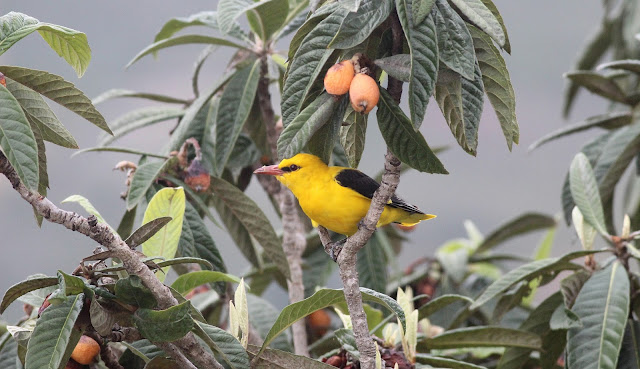 |
| Adult male Eurasian Golden Oriole (Oriolus orioulus). The Portuguese name for this species is "Papa-figos", meaning "Fig-eater" and it is something they actually do in late summer. This one here however is interested in the ripe fruits of the "Nêspera" (Loquat) in my front garden. I took this photo out of the kitchen window one morning. 07-May-2016. |
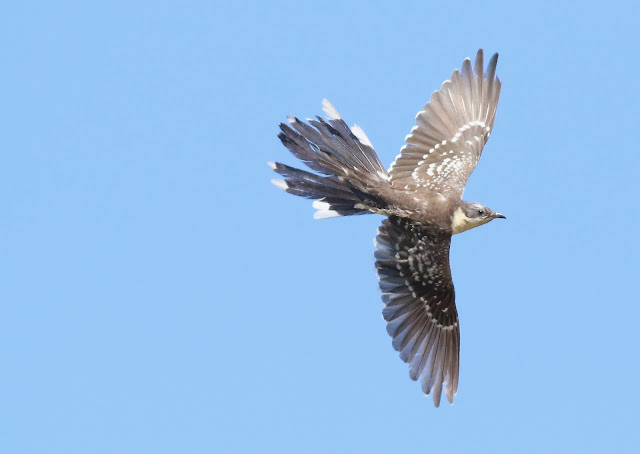 |
| The Great Spotted Cuckoo (Clamator glandarius) is an early messenger of spring and during February the first ones arrive (occasionally even in January). Baixo Alentejo-region, 14-April-2016. Photo: GS. |
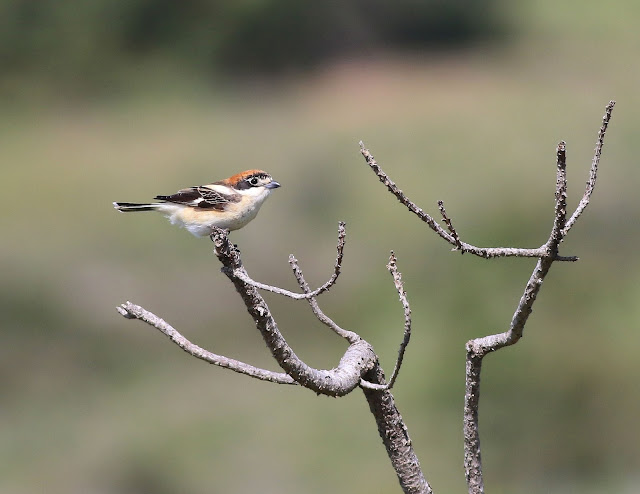 |
Also back quite early: The Woodchat Shrike (Lanius senator). In the first half of March the first ones arrive usually here.
|
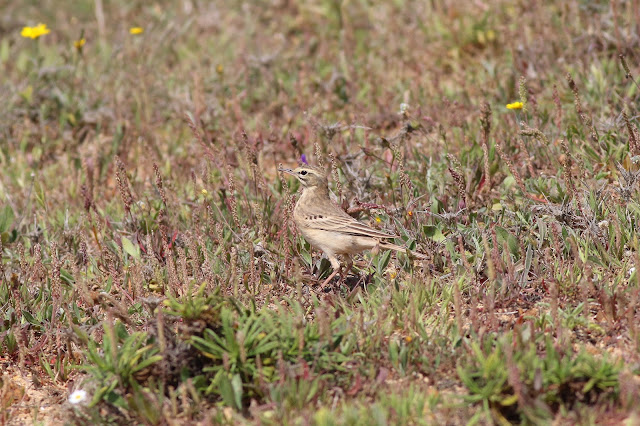 |
| The Tawny Pipit (Anthus campestris) inhabits open, arid landscapes with short and sparse vegetation. |
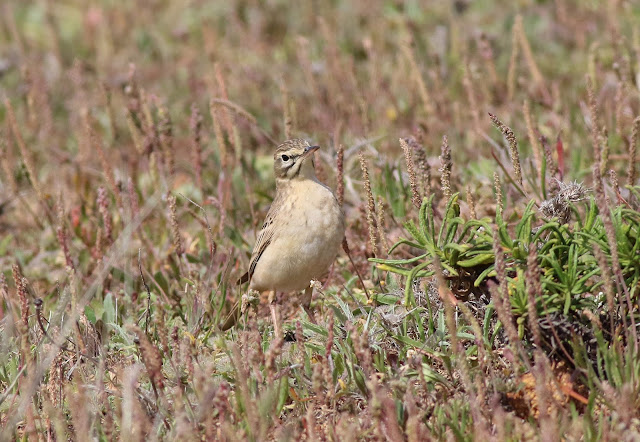 |
| Tawny Pipit (Anthus campestris) the same Ind. as above. Sagres-area, 22-April-2017. |
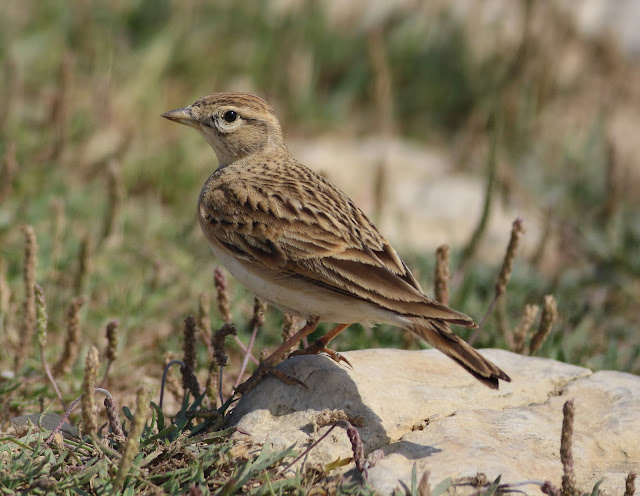 |
| (Greater) Short-toed Lark (Calandrella brachydactyla) shares the habitat with Tawny Pipit. One of 7 Lark-species breeding in south Portugal and the only one not wintering here. In March and April migratory flocks of the species may be encountered in dry salt marsh or barren farm land in the Algarve, the majority of birds nests further inland. |
 |
A male Common Cuckoo (Cuculus canorus) seeking shelter on top of the sea cliffs of the west Algarve after a long flight over the sea in late March 2017.
|







